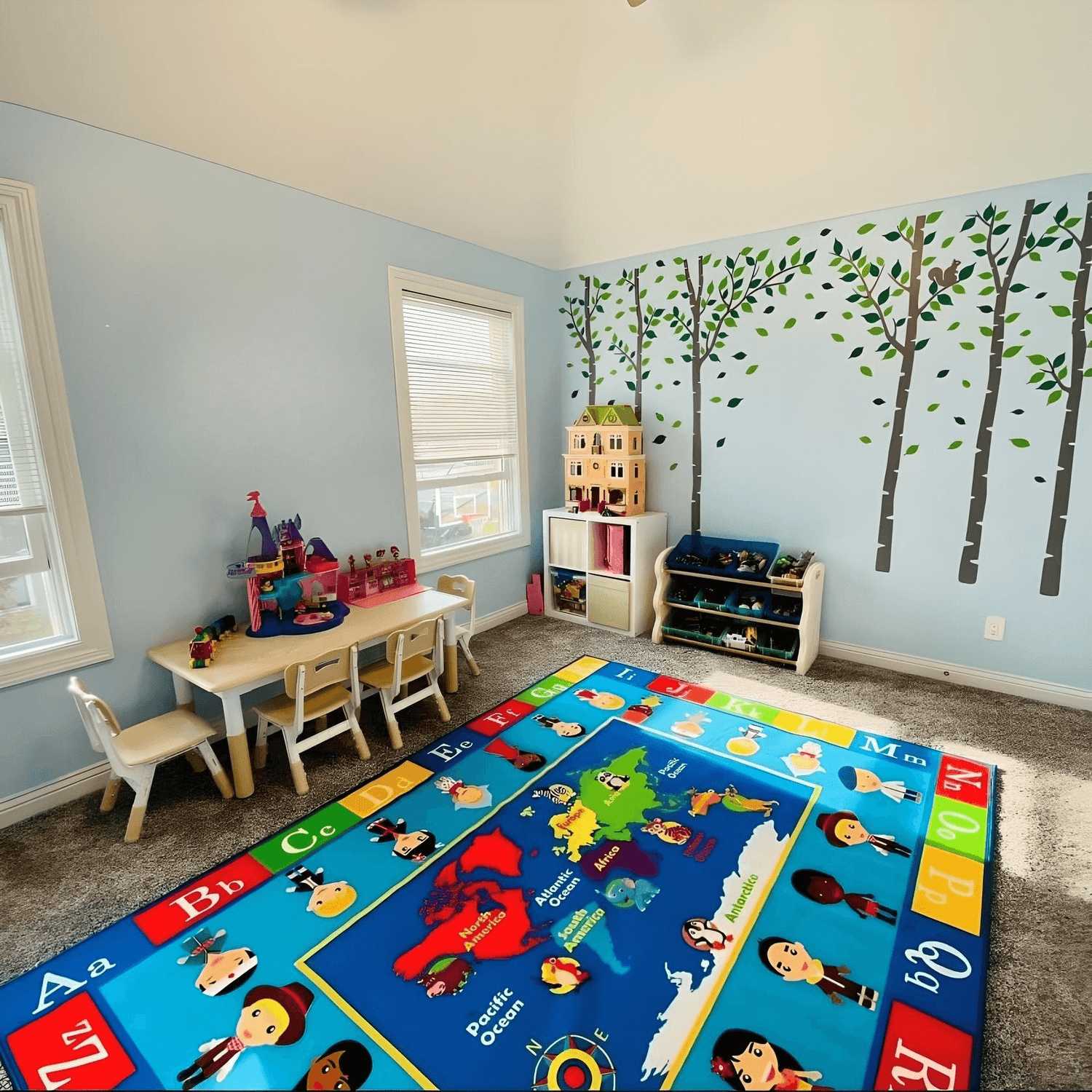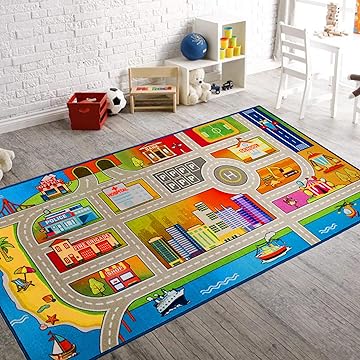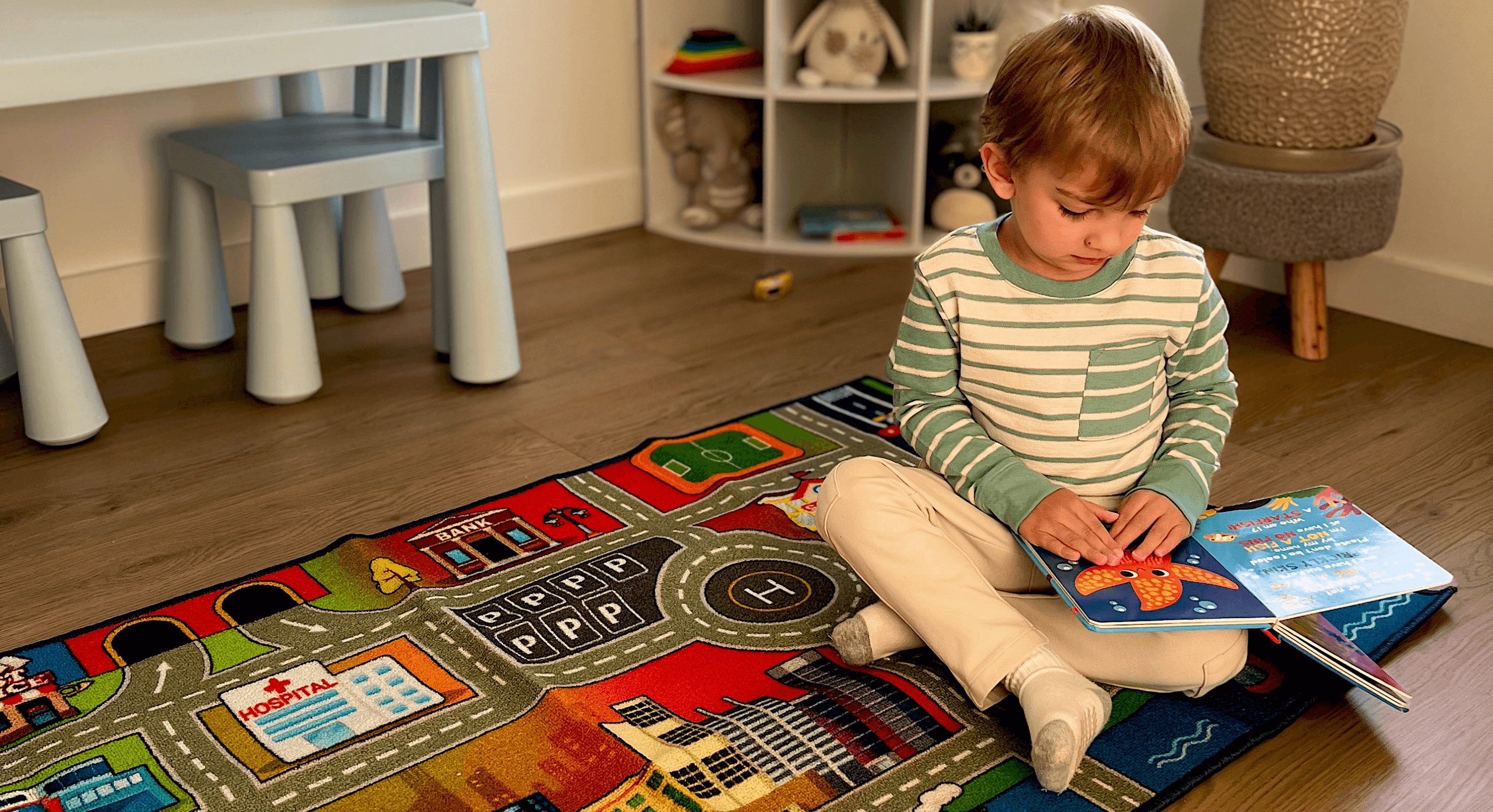In educational environments where hundreds of students share spaces daily, controlling microbial growth on surfaces—particularly carpets—has become an increasing priority for facility managers and school administrators. Antimicrobial carpet treatments represent a significant advancement in creating healthier learning environments while protecting substantial flooring investments. This comprehensive guide explores the science behind these treatments, their specific benefits for educational settings, implementation considerations, and best practices for maximizing their effectiveness while addressing health and environmental concerns.
Antimicrobial Technologies: Science and Application
Antimicrobial carpet treatments encompass various technologies designed to inhibit the growth of microorganisms within carpet fibers and backing systems.
Common Antimicrobial Technologies
Several approaches dominate the educational market:
1. Silver-Based Technologies
- Utilize silver ions to disrupt cellular functions of microorganisms
- Typically integrated into carpet fibers during manufacturing
- Provide long-lasting protection through slow release mechanism
- Generally considered among the safest antimicrobial approaches
2. Quaternary Ammonium Compounds
- Often referred to as "quats" in industry terminology
- Work by disrupting cell membranes of bacteria and fungi
- Can be applied during manufacturing or as post-installation treatments
- Effective against a broad spectrum of microorganisms
3. Triclosan Derivatives
- Less commonly used in newer educational installations
- Function by blocking enzyme production in microbes
- Facing increased scrutiny due to environmental persistence
- Being phased out in many applications
4. Zinc Pyrithione Formulations
- Increasingly popular in educational applications
- Effective against fungi and algae in particular
- Lower environmental impact than some alternatives
- Often used in combination with other antimicrobials
According to microbiology research, the effectiveness of these technologies varies based on environmental conditions, cleaning practices, and level of microbial challenge in specific educational settings.
Application Methods
Antimicrobial protection can be incorporated at different stages:
Manufacturing Integration
- Antimicrobial agents bonded to carpet fibers during production
- Provides most durable and consistent protection
- Typically survives multiple cleaning cycles
- Generally commands premium pricing
Post-Production Treatment
- Applied to carpets after manufacturing but before installation
- Provides good integration into fiber structures
- Moderately durable through cleaning cycles
- Mid-range pricing option
Post-Installation Application
- Applied to existing carpet installations
- Variable penetration and coverage
- Requires reapplication on established maintenance schedule
- Most affordable initial investment
Health Benefits in Educational Settings: Beyond Marketing Claims
While antimicrobial carpets have generated significant marketing attention, understanding their evidence-based benefits helps educational facilities make informed decisions.
Documented Benefits
Research supports several key advantages for educational environments:
Reduced Bacterial Load
- Independent studies show 45-99% reduction in viable bacteria compared to untreated carpets, depending on technology
- Particularly effective against gram-positive bacteria common in school settings
- Most significant reductions observed in high-traffic areas like entrances and corridors
Fungal Growth Inhibition
- Research demonstrates significant reduction in mold and mildew growth, particularly in moisture-prone areas
- Helps prevent musty odors common in aging carpet installations
- Can reduce allergenic potential of carpet environments
Biological Contaminant Management
- Helps neutralize biological soil from restroom transfer
- Reduces viability of microorganisms tracked in from playground areas
- Particularly valuable near food service areas and early childhood classrooms
According to educational health research, these benefits may contribute to potential reductions in absenteeism and improved indoor environmental quality, though direct correlation studies remain limited.
Limitations and Realistic Expectations
Educational facilities should maintain appropriate expectations:
Not Self-Cleaning
- Antimicrobial treatments inhibit microbial growth but don't remove dirt or non-living allergens
- Regular cleaning remains essential
- Treatments complement rather than replace maintenance protocols
Variable Effectiveness
- Performance varies across microbial types
- Bacteria generally more effectively controlled than viruses
- Environmental conditions significantly impact efficacy
Duration Considerations
- Effectiveness diminishes over time, particularly with manufacturer-applied treatments
- Cleaning methods and frequency affect longevity
- Most treatments require eventual renewal or replacement
Environmental Considerations: Balancing Protection and Responsibility
As educational institutions increasingly prioritize sustainability, environmental implications of antimicrobial treatments merit careful consideration.
Environmental Impact Factors
Key considerations include:
Bioaccumulation Potential
- Some technologies (particularly older formulations) raise bioaccumulation concerns
- Silver-based treatments require evaluation for environmental persistence
- Newer formulations generally designed for minimal environmental impact
Indoor Air Quality Effects
- Most current-generation treatments demonstrate minimal VOC contribution
- Properly applied treatments shouldn't negatively impact indoor air quality
- Some formulations may actually reduce VOCs by limiting microbial VOC production
Disposal Considerations
- End-of-life carpet disposal may require special consideration
- Some treatments affect recyclability of carpet materials
- Institutional sustainability goals should factor into selection criteria
Environmentally Preferable Options
For environmentally focused institutions:
Certifications to Consider
- Green Guard certification for indoor air quality impact
- Environmental Product Declarations (EPDs) documenting life cycle assessment
- Cradle to Cradle certification for comprehensive environmental evaluation
Emerging Eco-Friendly Alternatives
- Plant-based antimicrobial treatments showing promising efficacy
- Enzymatic systems that biodegrade after predetermined periods
- Physical antimicrobial approaches using fiber structure rather than chemical treatments
Implementation Strategies: Strategic Application in Educational Settings
Thoughtful implementation strategies maximize benefits while controlling costs for educational facilities.
Priority Areas for Treatment
Strategic application focuses resources on high-impact areas:
High-Risk Zones
- Early childhood classrooms where floor contact is frequent
- Special education environments with increased health vulnerabilities
- Health service areas requiring enhanced infection control
High-Traffic Areas
- Main entrances and primary corridors
- Stairwell landings and elevator lobbies
- Areas near restrooms and food service spaces
Moisture-Prone Locations
- Areas near drinking fountains
- Ground-level classrooms with exterior doors
- Areas with history of water intrusion or humidity issues
Integration with Construction and Renovation
New construction and renovation offer optimal implementation opportunities:
Specification Best Practices
- Include antimicrobial requirements in initial carpet specifications
- Require third-party testing documentation verifying efficacy claims
- Specify compatible cleaning protocols in the same document
- Consider requiring retained efficacy testing after cleaning cycle simulations
Installation Considerations
- Ensure installation methods don't compromise antimicrobial effectiveness
- Consider moisture barriers in combination with antimicrobial treatments
- Document treatment applications for warranty and maintenance records
Maintenance Protocols: Preserving Antimicrobial Efficacy
Proper maintenance significantly impacts the longevity and effectiveness of antimicrobial carpet treatments.
Cleaning Compatibility
Not all cleaning approaches support antimicrobial function:
Compatible Cleaning Chemistry
- Neutral pH cleaners generally preserve antimicrobial function
- Avoid harsh chemicals that may degrade treatments
- Some quaternary disinfectants may interact negatively with certain antimicrobial systems
- Consult manufacturer guidelines for specific recommendations
Extraction Methods
- Hot water extraction generally compatible with most antimicrobial treatments
- Ensure proper extraction to prevent lingering moisture that challenges antimicrobial capacity
- Consider lower-moisture interim maintenance methods to reduce biological challenges
Drying Considerations
- Ensure complete drying after wet cleaning processes
- Use enhanced ventilation or air movement to expedite drying
- Monitor humidity levels in treated areas
Efficacy Verification
Educational facilities should verify ongoing protection:
Testing Protocols
- Consider periodic ATP (adenosine triphosphate) testing to verify bioburden reduction
- Establish baseline measurements for comparison
- Focus testing on high-risk and high-traffic areas
Visual Inspection Guidelines
- Establish monitoring protocols for signs of microbial growth
- Train maintenance staff on early identification of treatment failure
- Document inspection findings for warranty purposes
Cost-Benefit Analysis: Making the Investment Case
Educational facilities must evaluate the economic case for antimicrobial carpet treatments amid competing priorities.
Cost Factors
Investment considerations include:
Initial Premium
- Manufacturing-incorporated treatments typically add 10-20% to carpet costs
- Post-installation treatments generally range from $0.15-0.40 per square foot
- Volume discounts often available for district-wide implementations
Maintenance Impact
- Potential reduction in intensive restorative cleaning frequency
- Possible extension of carpet service life
- Reduced staff time addressing odor and staining issues related to microbial growth
Health-Related Savings
- Potential contribution to reduced absenteeism (though direct correlation studies remain limited)
- Possible reduction in deep cleaning requirements during disease outbreaks
- Contribution to overall indoor environmental quality initiatives
Return on Investment Calculations
For budget justification:
Lifecycle Cost Analysis
- Calculate total ownership cost including installation, maintenance, and replacement
- Factor extended service life into calculations
- Compare treated and untreated options over total service period
Value-Added Benefits
- Consider non-financial benefits in evaluation
- Factor reputational advantages of health-focused facility management
- Consider alignment with broader institutional wellness initiatives
Future Innovations: Emerging Technologies and Approaches
The educational antimicrobial carpet sector continues evolving with several promising developments.
Emerging Technologies
Innovations to monitor include:
Responsive Systems
- "Activated" antimicrobial systems that intensify activity when moisture or soiling increases
- pH-responsive treatments that target specific biological challenges
- Systems providing visual indication of effectiveness or depletion
Hybrid Approaches
- Combinations of different antimicrobial mechanisms for broader effectiveness
- Integration of antimicrobial and anti-allergen technologies
- Synergistic systems incorporating soil resistance with antimicrobial function
Application Innovations
- Improved binding technologies extending treatment lifespans
- Renewable application systems enabling simple maintenance reapplication
- Integration with smart building systems for monitoring and maintenance scheduling
Conclusion
Antimicrobial carpet treatments offer significant potential benefits for educational environments when properly selected, implemented, and maintained. By inhibiting microbial growth, these technologies can contribute to healthier learning environments while potentially extending carpet lifespans and reducing maintenance requirements. However, realizing these benefits requires thoughtful consideration of specific institutional needs, strategic implementation in priority areas, and appropriate maintenance protocols.
As with many facility management decisions, the most successful approaches balance evidence-based selection with practical implementation strategies. By understanding the science behind antimicrobial treatments, their appropriate applications in educational settings, and their integration with broader facility management practices, educational institutions can make informed decisions that enhance environmental health while maximizing return on flooring investments.
For most educational facilities, a targeted approach—applying antimicrobial treatments in high-risk and high-traffic areas rather than facility-wide—offers the most favorable balance of benefits and costs. With proper maintenance and realistic expectations, these treatments can become valuable components of comprehensive environmental health strategies in learning environments.




Leave a comment
This site is protected by hCaptcha and the hCaptcha Privacy Policy and Terms of Service apply.